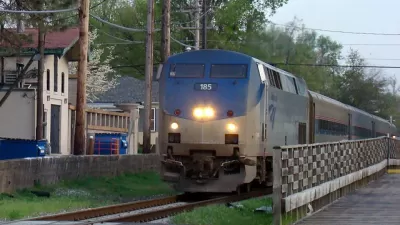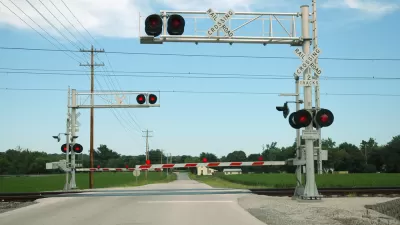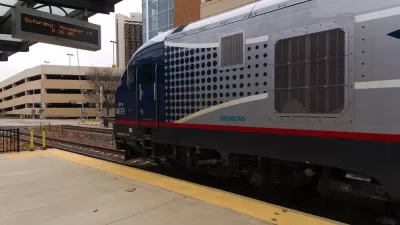A $102 million investment by Illinois along with federal funds from the Recovery Act will pay for double-tracking and a new rail bridge to enable 109 mph service on a key section of Amtrak's Chicago to St. Louis high speed rail corridor.
This particular corridor was the first of many listed by Time's Michael Grunwald last month in the post, "Responding to Distorted Criticisms of the President's High Speed Rail Program," that illustrated results of the president's ambitious high speed rail stimulus program in response to false claims by critics that the program is a failure.
"A key swath of the high-speed rail line between Chicago and St. Louis is set to get $102 million in upgrades, Gov. Pat Quinn announced on Sunday (August 31)," writes Matt McKinney of the Chicago Sun-Times.
The two-year project will reduce travel times between Chicago and St. Louis from five-and-a-half hours to four-and-a-half hours, Quinn said in a written statement..
The work will be performed by the Union Pacific Railroad and overseen by the Illinois Department of Transportation (IDOT), according to IDOT news [PDF]. Amtrak's Illinois Service operates on the corridor.
"This double-tracking [between downstate Mazonia and Elwood] will then allow more daily round-trips at increased 110-mph speeds. Trains now travel at 110 mph between Dwight and Pontiac," adds McKinney.
A map [PDF] of the route and multi-media are available on IDOT's High Speed Rail project page.
"The state has committed $358.8 million to the Chicago-St. Louis route, with the remainder of the $1.7 billion project federally funded," notes McKinney.
[Hat tip to Adam Snider of Politico for including the article in Tuesday's Morning Transportation].
FULL STORY: Quinn announces $102 million investment for high-speed rail

Planetizen Federal Action Tracker
A weekly monitor of how Trump’s orders and actions are impacting planners and planning in America.

Maui's Vacation Rental Debate Turns Ugly
Verbal attacks, misinformation campaigns and fistfights plague a high-stakes debate to convert thousands of vacation rentals into long-term housing.

San Francisco Suspends Traffic Calming Amidst Record Deaths
Citing “a challenging fiscal landscape,” the city will cease the program on the heels of 42 traffic deaths, including 24 pedestrians.

Defunct Pittsburgh Power Plant to Become Residential Tower
A decommissioned steam heat plant will be redeveloped into almost 100 affordable housing units.

Trump Prompts Restructuring of Transportation Research Board in “Unprecedented Overreach”
The TRB has eliminated more than half of its committees including those focused on climate, equity, and cities.

Amtrak Rolls Out New Orleans to Alabama “Mardi Gras” Train
The new service will operate morning and evening departures between Mobile and New Orleans.
Urban Design for Planners 1: Software Tools
This six-course series explores essential urban design concepts using open source software and equips planners with the tools they need to participate fully in the urban design process.
Planning for Universal Design
Learn the tools for implementing Universal Design in planning regulations.
Heyer Gruel & Associates PA
JM Goldson LLC
Custer County Colorado
City of Camden Redevelopment Agency
City of Astoria
Transportation Research & Education Center (TREC) at Portland State University
Jefferson Parish Government
Camden Redevelopment Agency
City of Claremont





























